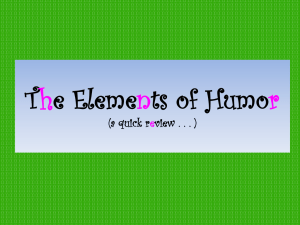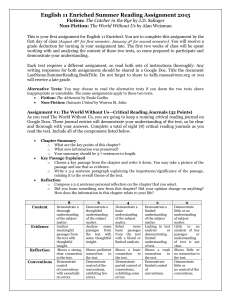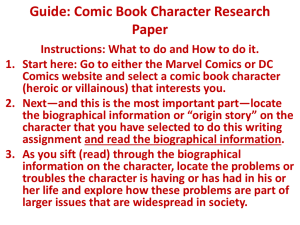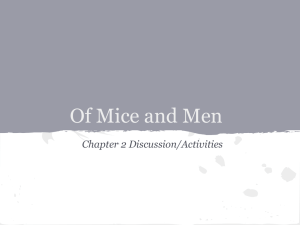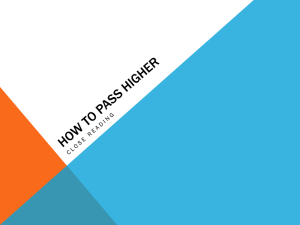Section 8 SAT Test - River Dell Regional School District
advertisement
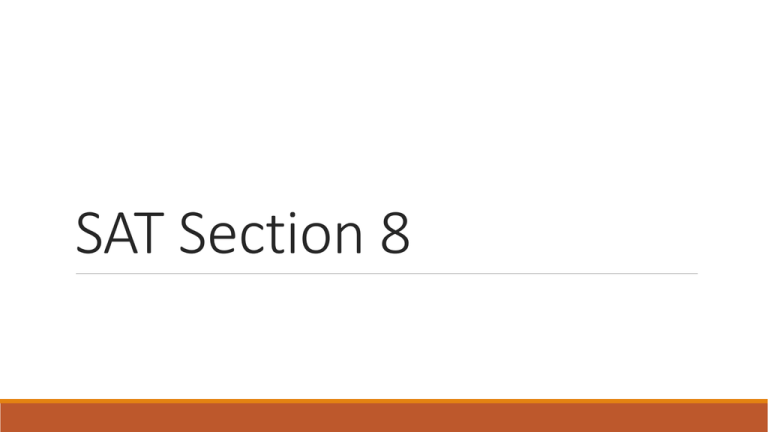
SAT Section 8 1. Many paintings of the American Southwest convey a feeling of isolation and loneliness that mirrors the --- landscape they depict. A. lush- lavish B. sprawling- spread out in an unnatural way C. desolate- isolated D. gaudy- excessively showy E. monumental- massive or imposing Level 2 Question 2. Only recently created, this orchid is a ---, a plant produced by deliberately crossbreeding two different varieties of flowers. A. misnomer- contradiction B. hybrid- the offspring of two animals or plants of different breeds, varieties, species, or genera, especially as produced through human manipulation for specific genetic characteristics. C. vector- path D. curative- healing E. precursor- ancestor Level 1 Question 3. The pharmaceutical company insisted that its testing of new drugs was quite ---, more rigorous than the industry standard. A. stringent- severe B. dispersive- scatter C. conditional- provisional D. recessive- receding E. obtrusive- unmistakable Level 3 Question 4. Freedom of expression is not necessarily a --- force: communities that encourage it often feel less threatened by social unrest than do those in which dissent is --A. revolutionary- radically new or innovative… promoted- to advance in rank or position B. positive… prohibited- prevent C. successful… protested-an expression or declaration of objection, disapproval, or dissent, often in opposition to something a person is powerless to prevent or avoid D. divisive- forming divisions… restricted- confined, limited E. militant- vigorously active and aggressive… fostered- encouraged Level 4 Question 5. Thomas Hardy’s novels are described as --because of their preoccupation with daily life in rural and agricultural settings. A. bucolic- rural B. prolific- productive C. lugubrious- sad/mournful D. sundry- assorted E. metaphorical- symbolic Level 5 Question 6. Some skeptics consider the Search for Extraterrestrial Intelligence (SETI) to be ---, even foolish; others go so far as to accuse SETI scientists of outright --- in applying skewed data. A. misguided- wrong … remonstrance-evidence B. absurd- ridiculous … erudition- knowledge C. plausible- believable … lassitude- weariness D. painstaking- thorough … fabricated- made up E. wrongheaded- reckless … chicanery- trickery Level 5 Question 7. Both authors would most likely agree that comic books A. impair (damage) social development B. could benefit from self-regulation C. have no educational value D. are obtained too easily E. are garishly (tasteless) amusing Level 1 Question 8. In line 4, “question” most nearly means A. matter B. request C. objection D. possibility E. doubt Level 2 Question 9. The author of Passage 1 criticizes those who would “make a sharp distinction” (line 11) because the author believes that A. the best educators are also entertainers of a sort B. without entertainment little learning takes place C. entertainment and learning are closely interrelated D. reading comic books may inspire children to create their own comic works E. effective textbooks often adopt certain humorous techniques Level 3 Question 10. In lines 18-22, the three sentence beginning with “They” primarily serve to A. lament (expression of grief) students’ lack of interest in traditional learning B. condemn those who profit by pandering to children C. enumerate (count) the failings of the educational system D. indicate ways in which children are shortchanged E. specify how comic books might be improved Level 3 Question Question 11: In response to the claim made in lines 2427 of Passage 1 (“I have…reason”), the author of Passage 2 would most likely assert (claim) that A. adolescents tend to be passionate about their dislikes as well as their likes B. Comic books are not intended to provide lifelong entertainment C. collectible pop-culture items are now displayed in museums D. the sentimental value of comic books cannot be logically explained E. many adults eagerly read and collect comic books Level 4 Question 12. The argument from Passage 2 that best refutes the statement in lines 27-29 of Passage 1 is that comic books A. do not cost much compared to other amusements B. openly acknowledge their true purpose C. help children cope with the stresses of their world D. cannot be appreciated by someone who lacks a sense of humor E. have never been proven to distract children from homework Level 3 Question Question 13: In line 40, quotation marks are used to A. underscore a traditional definition B. set off a specialized term C. attribute a novel concept D. mock a flawed hypothesis E. support a challenging assertion Level 3 Quetion Question 14: It can be inferred that the author of Passage 2 considers “attempts at the latter” (line 52) to have been A. unpolished products B. unpopular changes C. misunderstood creations D. ill-conceived failures E. foolish imitations Level 4 Question Question 15: In line 57 “compromised” most nearly means A. settled B. endangered C. combined D. reconciled E. degraded Level 4 Question Question 16: In lines 68-87, the author of Passage 2 argues that the fantasy world of comic books A. taps into the repressed fears of every child B. fails to stand up to extended critical scrutiny C. appeals to adults who cultivate childlike wonder D. has a therapeutic effect on young readers E. inspires many children to learn to write well Level 2 Question Question 17: The author of Passage 1 would most likely regard lines 18-83, Passage 2, as evidence of the A. students’ inability to read demanding fiction B. schools’ failure to monitor student activities C. need to combine education with entertainment D. hackneyed (tired/cliché) narratives found in comic books E. potentially harmful influence of comic books Level 3 Question Question 18: Compared to the tone of Passage 2, that of Passage 1 is more A. conversational B. facetious- foolish C. severe D. sarcastic E. analytical Level 4 question



